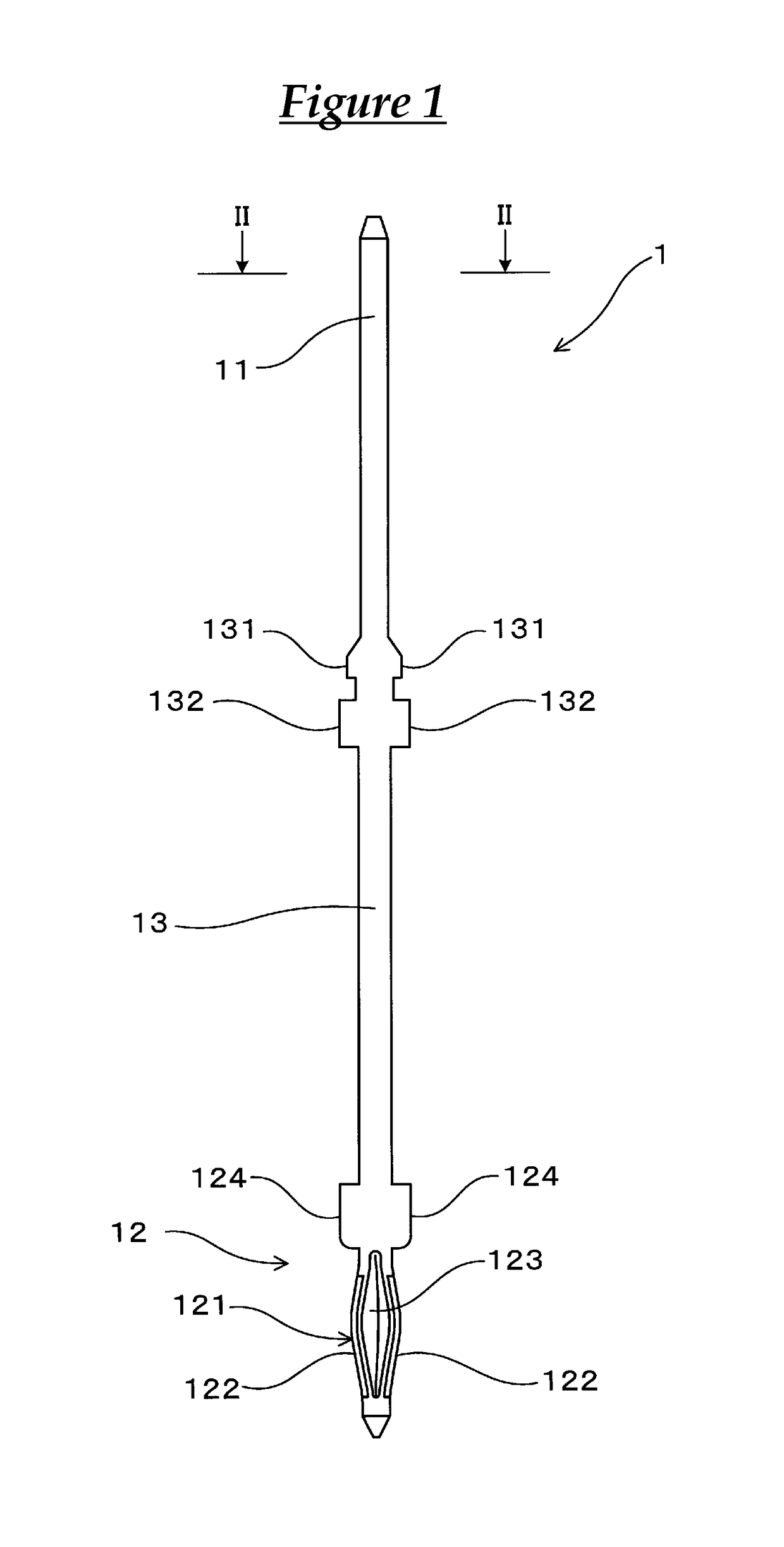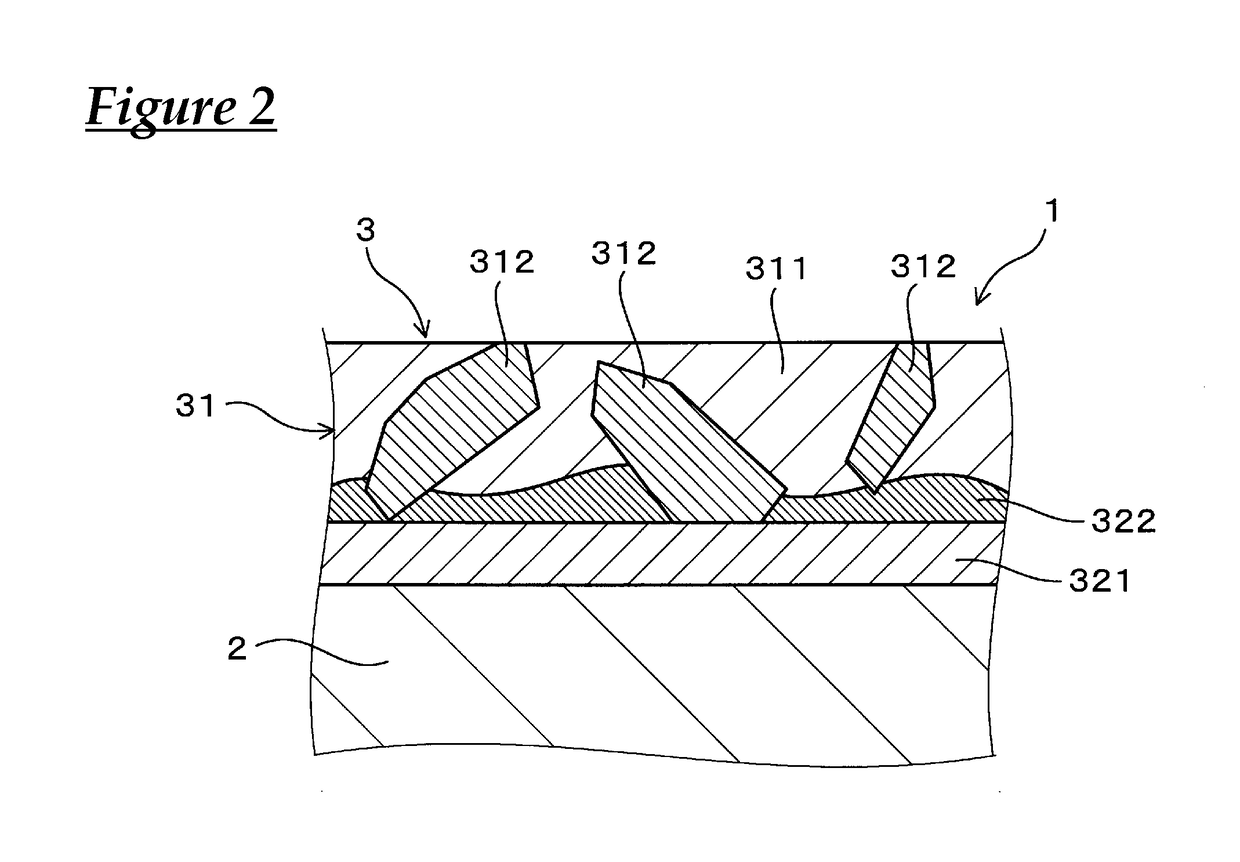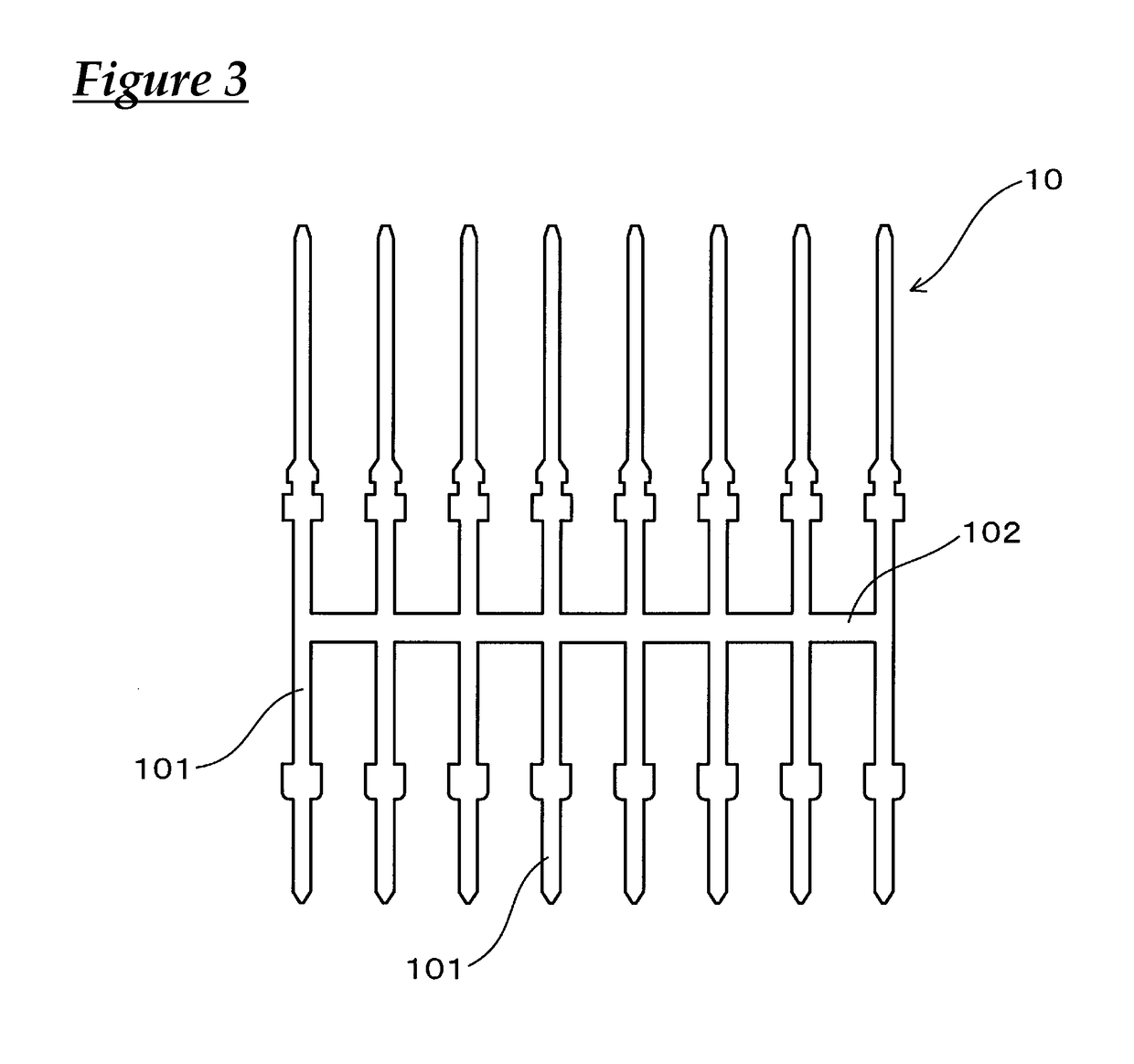Terminal fitting and connector
a technology of terminal fittings and connectors, applied in the direction of connecting, coupling contact members, electrical equipment, etc., can solve the problems of high friction coefficient of terminal fittings, terminal fittings exposed to hot and humid environments, etc., to reduce the friction coefficient of outermost surfaces, reduce the insertion force of terminals, and suppress the effect of surface oxidation of plating films
- Summary
- Abstract
- Description
- Claims
- Application Information
AI Technical Summary
Benefits of technology
Problems solved by technology
Method used
Image
Examples
embodiment 1
[0052]The terminal fitting according to Embodiment 1 will be described with reference to FIGS. 1 to 5. As shown in FIGS. 1 to 5, a terminal fitting 1 of the present embodiment includes a metal base material 2, and a plating film 3 that covers a surface of the metal base material 2. The plating film 3 has an outermost layer 31 that is exposed at the outermost surface. The outermost layer 31 includes an intermetallic compound 312.
[0053]The plating film 3 includes a Ni foundation layer 321 that is formed on the surface of the metal base material 2, and the outermost layer 31 that is formed above the Ni foundation layer 321, and is exposed at the outermost surface of the plating film 3. The outermost layer 31 includes a Sn parent phase 311, and the intermetallic compound 312 that is dispersed in the Sn parent phase 311.
[0054]In the present embodiment, the metal base material 2 is specifically a Cu alloy. Furthermore, the intermetallic compound 312 is made of (Ni0.4Pd0.6)Sn4. The particl...
experimental examples
[0067]Hereinafter, more specific description will be given with reference to experimental examples.
[0068]Sample 1 was produced by sequentially forming a Ni plating film (thickness: 1 μm), a Pd plating film (thickness: 0.02 μm), and a Sn plating film (thickness: 1.5 μm) on a surface of a Cu alloy plate material, and then subjecting the resultant to reflow processing at 350° C.
[0069]Sample 2 was produced in the same manner as in Sample 1 but using a Pd plating film (thickness: 0.025 μm), and a Sn plating film (thickness: 1.25 μm) instead. Furthermore, Sample 3 was produced in the same manner as in Sample 1 but using a Pd plating film (thickness: 0.03 μm) and a Sn plating film (thickness: 1.0 μm) instead. Note that for comparison, Sample 1C was produced by sequentially forming a Ni plating film (thickness: 1 μm), and a Sn plating film (thickness: 1 μm) on a surface of a Cu alloy plate material, and then subjecting the resultant to reflow processing at 350° C.
[0070]Then, cross-sections ...
PUM
| Property | Measurement | Unit |
|---|---|---|
| particle diameter | aaaaa | aaaaa |
| friction coefficient | aaaaa | aaaaa |
| particle diameters | aaaaa | aaaaa |
Abstract
Description
Claims
Application Information
 Login to View More
Login to View More - R&D
- Intellectual Property
- Life Sciences
- Materials
- Tech Scout
- Unparalleled Data Quality
- Higher Quality Content
- 60% Fewer Hallucinations
Browse by: Latest US Patents, China's latest patents, Technical Efficacy Thesaurus, Application Domain, Technology Topic, Popular Technical Reports.
© 2025 PatSnap. All rights reserved.Legal|Privacy policy|Modern Slavery Act Transparency Statement|Sitemap|About US| Contact US: help@patsnap.com



